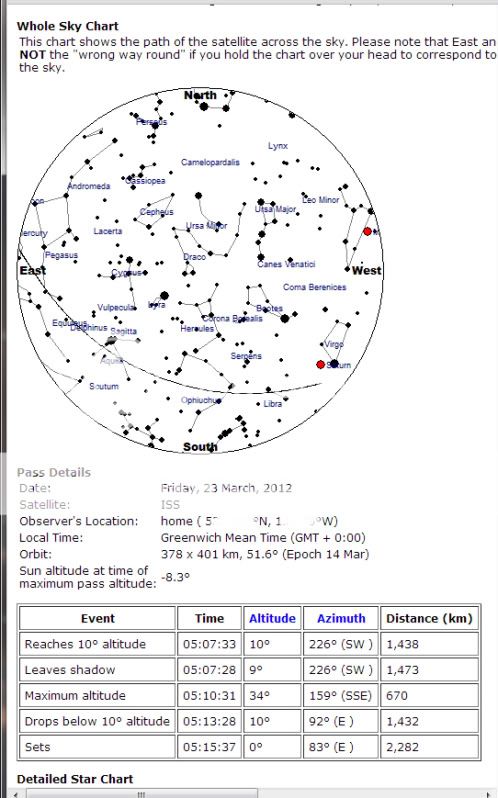Quote: Dally "Thanks. It's the Telegraph's map that has been confusing me - from that it looks the other way round. But, all others and logic dictate Venus as being the bright one on the right.'"
If you read the Telegraph in that link, "The chart shows the sky at midnight at the start of March.". It's now March 13th! The problem with these infernal planets is they keep moving!
The simple way to always be fully informed, for freehttps://www.getlatlon.com/rl
where you enter your place name, then zoom to your house, and copy you Lat and Long into a document. Please note, your longitude may well have a minus!!
2. Go to the excellent free resource,
rlhttps://www.heavens-above.com/rl and register as a user. Then set up your home co-ordinates as your current observing site (and PS you can set up as many different sies as you want; for example, I always set one up if I'm going away on holiday, then print out the charts and other info i want to take with me)
This gives you a personal sky map for every day, automatically.
You can also look at the Sky Chart, and see why the planets look like they do, from the Earth's perspective, as it shows you whereabouts they are relative to each other in space, in their respective orbits.
Just now, Mars is prominent in the southeast, and Saturn is nice in the south. Jupiter and Venus went to bed hours ago!
The site also gives you an incredible amount of other personalised data, with just a single click. For example, any visible passes of the international space station. Or check out Iridium flares.
Current magnitude (brightness) of Venus is -4.1 and Jupiter -1.9. The bigger the minus, the brighter the object. The scale is logarithmic, and a difference of 5 magnitudes means a brightness difference of exactly 100 times. A difference of one magnitude corresponds to a brightness difference of around 2.51
The brightnesses change a great deal, due to (a) the planet's distance from Earth and (b) their position relative to Earth-Sun. If you picture the Sky Chart, you can see how and why sometimes a planet will be "full face" illuminated as viewed from Earth, and at other times it will be gibbous, or a crescent.












